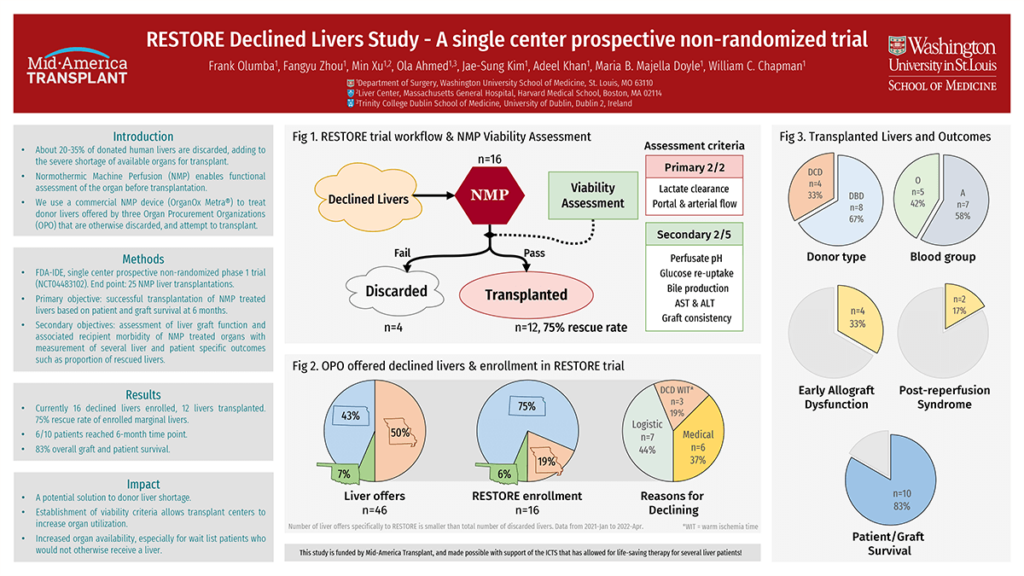Introduction: There is a severe shortage of available liver transplants to meet the needs of patients on the waiting list. There are many factors contributing to this shortage and poor organ utilization is a significant one. A large proportion (~20-35%) of livers are discarded based on subjective assessment and concern for organ quality. Objective criteria are needed for assessing these marginal organs. A new technology called normothermic machine perfusion (NMP) has been extensively studied as the optimal method to recondition and reclaim marginal livers for transplant. NMP is a machine device that allows the delivery of oxygenated blood and nutrients to a liver at body temperature, enabling the function of the organ to be tested before it is transplanted. This study uses a commercial NMP device (OrganOx Metra) to treat previously discarded human livers for transplantation.
Methods: Single center, prospective non-randomized trial (NCT04483102). Trial endpoint is 25 NMP treated liver transplantations. Primary objective is the successful transplant of NMP livers based on patient and graft survival at 6 months. Secondary objectives are assessment of liver graft function and associated recipient morbidity of NMP treated organs with measurement of several liver and patient specific outcomes such as proportion of rescued livers.
Results: Fifteen livers accepted for placement and testing on NMP device. Eleven out of 15 livers passed viability testing and were transplanted contributing to a 73.3% rescue rate for marginal livers. Currently, six patients at 6-month time point with 66.7% graft and patient survival.
Impact: Over the last two decades, the demands for liver transplantation have outpaced the available organ supply. This translational study offers the most immediate solution to this problem. It will allow transplant centers to increase their utilization rate by providing reliable safety and viability criteria for the selection of marginal organs. Use of this technology will help increase the availability of organs to patients previously unlikely to receive a liver transplant.
Organization – Washington University in St. Louis
Olumba F, Zhou F, Xu M, Ahmed O, Kim JS, Khan A, Doyle MB, Chapman W
